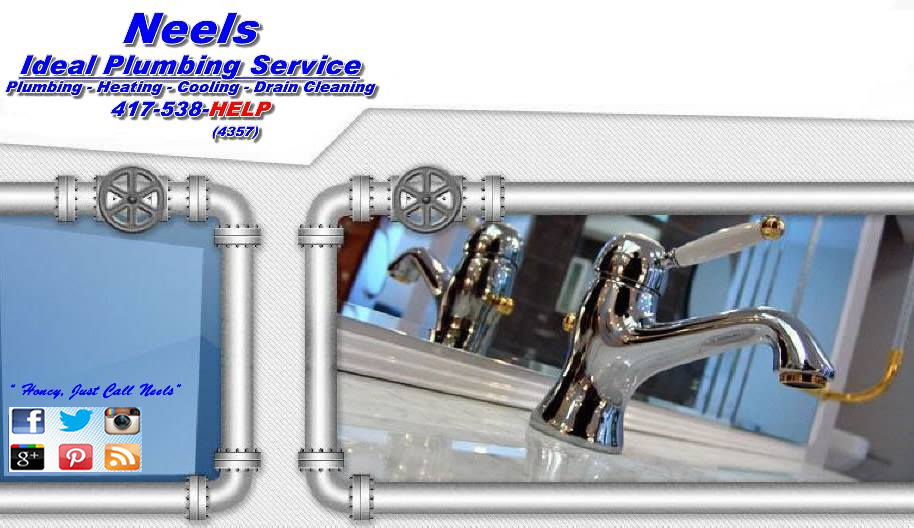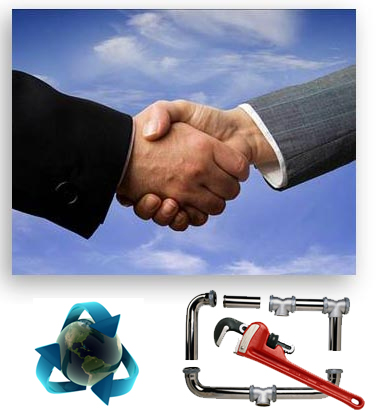|
Tips and Hints - How do I lower your electric bill?
Saving energy in your home doesn’t require a major investment of
money or time. Follow these low-cost (or even no-cost!) efficiency
tips and you’ll see a difference in your electric bill.
Scroll down to find helpful energy-saving suggestions for each of
the following categories:
-
Cooling
-
Heating
-
Water Heating
-
Lighting
-
Refrigerator/Freezer
-
Washer/Dryer
-
Range/Oven
-
Dishwasher
-
Electronics
Cooling
During the summer months, costs associated with keeping your home
comfortably cool can make up around 55% of your electric bill.
Here’s how to stay cool and save.
No-cost tips
-
Leave drapes and blinds closed during the day to
keep out heat—particularly on the south, east, and
west sides of your home.
-
Remove debris and obstructions from around outdoor
air conditioning components.
-
If you have a central air conditioning system, don’t
close off rooms or close vents; that puts additional
strain on your system and increases the cost of
operation.
-
Don’t place lamps, wall-mounted televisions, or
other electronics close to your thermostat. Heat
from these appliances can be detected by your
thermostat and that will cause your air conditioning
system to run longer than necessary.
-
Set your thermostat at 78 during the summer season
and even higher if you’re going to be away for more
than 24 hours. Every degree you raise your
thermostat can save you approximately two to three
percent on cooling costs.
-
Switching your air conditioning fan from “on” to
“auto” can save you up to $20 each month on your
electric bill.
Low-cost tips
-
Run the exhaust fan while cooking to draw hot air
out of the kitchen.
-
Replace disposable air filters or clean permanent
filters once a month to maximize efficiency and save
on energy costs.
-
Use the bathroom fan to remove heat and humidity
from your home when you shower or take a bath—and
turn it off when you’re finished.
-
Plant a tree ; it will beautify your landscape while
keeping your home cooler during the summer.
-
Maintain the effectiveness of your cooling system by
have it serviced at least once a year.
Heating
When cold weather sets in, heating your home can account for up to
52% of your total energy bill. Here are some ideas for managing your
electric use.
No-cost tips
-
Open your drapes or blinds during the day to help
capture heat from sunlight and close them at night
to help retain the heat gain.
-
Set your thermostat to 68 degrees when you’re home.
If you’re going away for the weekend, lower the
thermostat to 60 degrees. Put another blanket on the
bed and turn the thermostat down a few degrees at
night.
-
Never use a stove, oven, or portable grill as an
indoor heat source; doing so creates a safety
hazard.
-
Building a fire in your fireplace may look nice, but
it’s not the most efficient way to heat. Much of the
warm inside air from throughout your house can go
right up the chimney. If you do use your fireplace,
make sure to remember to close the damper after the
fire is out.
Low-cost
tips
-
Replace disposable air filters or clean permanent
filters at least once a month. A dirty filter forces
your equipment to work harder—and that results in
higher electric bills.
-
Running your ceiling fan on “low” can be useful in
circulating warm air throughout a room.
-
Reduce heat loss by installing weather stripping and
seals around doors and windows. Install gaskets
under switch plates for lights and electrical
outlets, and caulk all potential air leaks.
Water Heating
Whether for cooking, bathing, laundry, dishwashing, or other uses,
about 15 to 20% of your monthly energy use goes toward water
heating. These ideas can save you money.
No-cost tips
-
Save energy by taking short showers instead of
baths. A five-minute shower typically uses less than
15 gallons of water while a bath can use 30 to 40
gallons.
-
Around 80% of the energy used to wash clothes goes
to heating water. Save on your electric bill by
washing as many loads as possible in cold water.
-
Turn your water heater’s thermostat down to 120
degrees. This can save up to $10 per month. If you
have an electric water heater, be sure to turn off
the power before changing the setting.
-
Draining a bucketful of hot water from the faucet at
the base of your water heater several times a year
will reduce sediment buildup and make the heating
elements last longer.
Low-cost tips
-
Make sure your faucets are turned off completely and
repair any leaks. A dripping hot water faucet can
leak hundreds of gallons a year and drive up your
water heating costs.
-
Improve your water heater’s efficiency by wrapping
it in an insulated jacket made for this purpose.
-
Install a low-flow showerhead to reduce water usage
while still providing adequate supply and comfort.
Lighting
Lighting typically accounts for about eight to 10 percent of the
average electric bill. Follow these tips to trim those costs.
No-cost tips
-
Turn off lights when not in use. You can save more
money by turning lights on and then off again than
by just leaving them on.
-
Take advantage of daylight hours whenever possible
to illuminate your home without using electricity.
Low-cost tips
-
New energy-efficient compact florescent and LED
bulbs produce more light for less energy. They cost
more initially than incandescent bulbs, but last
much longer—and are therefore much less expensive in
the long run.
-
Prioritize bulb replacement according to how often
the fixture is in use, in order to save the most
energy and money. Focus on kitchen ceiling lights,
family room table and floor lamps, and outdoor
entryway/porch lights.
-
Paint interior walls a lighter color. This will
reflect light throughout your house and reduce the
need for additional lighting.
Refrigerator/Freezer
Your refrigerator is typically one of the most expensive home
appliances to operate. Here are some helpful ideas to reduce running
costs.
No-cost tips
-
Resist the urge to open the door and then decide
what you want. Every time you open the door, 30% of
the cool air (air that you’ve paid to cool!)
escapes.
-
It’s not anybody’s idea of a fun job, but cleaning
the coils underneath or behind your
refrigerator/freezer will keep it running
efficiently.
-
It may be convenient to have an extra place to stash
cold drinks, but you can save on your energy bill by
not placing an additional refrigerator in a garage
or carport. During the summer months, operating an
older model refrigerator in one of these spaces can
cost you an extra $15-20 per month.
-
Keep your fridge and freezer full, but not
overcrowded. Use jugs of water or bags of ice to
fill empty space.
-
Pay attention to temperatures. Keeping the
refrigerator or freezer compartments too cold can
cost you money. Manufacturer-recommended
temperatures are 35 to 38 degrees for the fridge and
zero to 5 degrees for the freezer section. Check the
setting by placing an outdoor or refrigerator
thermometer on the middle shelf overnight.
-
Cover all liquids stored in your refrigerator.
Moisture drawn into the air makes your fridge work
harder.
-
Check the condition of your door gaskets using a
dollar bill. Close the refrigerator or freezer door
on a dollar bill and attempt to remove it. If it
slides out easily, with no resistance, you probably
need to replace your gasket.
Washer/Dryer
Typical four-person households wash nearly 400 loads of laundry per
year. Conventional washers use 40-50 gallons of water per load,
while high-efficiency washers use as little as one-third that
amount. Here are some easy ways to reduce the energy needed on
laundry day.
No-cost tips
-
Avoid running your washer or dryer until you have a
full load. Dry consecutive loads to take advantage
of the heat stored in your dryer from the previous
load.
-
On nice sunny days, you may want to skip the clothes
dryer altogether: hang your clothes on a line and
dry your clothes the old-school (and cost -free!)
way.
-
Be sure to clean the lint filter of your dryer after
every load.
-
Adjust your dryer’s heat setting to “low” and take
care not to over-dry your clothes.
-
Every few months, inspect the outside dryer vent and
clean when necessary.
-
Wash in cold water and set water levels to medium
settings.
Range/oven
There are ways to make cooking and baking easier on your electric
bill. Here are a few of them.
No-cost tips
-
Watch the time carefully to avoid preheating the
oven longer than necessary.
-
Turn the oven off 15 minutes prior to the specified
baking time; the residual heat will finish the
cooking process.
-
Leave the oven door closed during baking. Each time
you open the door, you lose about 25 to 50 degrees
of heat.
-
Using your oven and range to capacity can save
energy; if possible, cook several dishes at the same
time.
-
Minimize heat loss on your stove-top by using
flat-bottom pots or skillets with tight-fitting lids
that match the size of the burner.
-
During the summer, use your outdoor grill or
microwave meals to keep your kitchen cooler and
reduce energy costs.
Dishwasher
Roughly 70 – 80% of the energy required to wash dishes goes to
heating water. Follow these suggestions to help your dishwasher run
more efficiently.
No-cost tips
-
Always run your dishwasher on a full load.
-
Use the “energy-saving” button on your dishwasher or
(even better!) air-dry your dishes and save up to
20% on energy by eliminating the heating function.
-
During the summer, run your dishwasher during the
cooler parts of the day—either early morning or late
evening—when your air conditioner will have to work
less to reduce the heat and humidity added by
dishwashing.
Electronics
All
the many devices we use to inform and entertain ourselves—and
communicate with others—require electricity. These tips will help
you manage this rapidly developing area of energy use.
No-cost
tips
-
Beware of energy “vampires.” Many electronic devices
(computers, TVs, wall-chargers, etc.) use power even
when you’re not actively using them. The rule is: if
a device is displaying a “ready” light—even if it’s
not turned “on”—then it’s using electricity. Unplug
these devices when not in use and save energy.
Low-cost
tips
-
To make managing charging your devices easier (and
more energy-efficient) create a “charging station”
connected to a power strip that accepts all your
power cords for laptops, cell phones, and digital
cameras. Turn the power strip off when nothing is
being charged.
General
These suggestions may not fall neatly within a particular category,
but they can sure help you save on your monthly energy bill.
No-cost tips
-
Keep all windows and doors located close to your
thermostat closed tightly. Keep heat sources such as
lamps and appliances away from your thermostat.
-
Look for the ENERGY STARŪ label when replacing
appliances
-
Keep your appliance manuals handy; many contain
energy-saving tips for operation.
-
Make sure your outside air unit clean and clear of
leaves and debris.
Low-cost tips
-
Caulk and install weather-stripping around windows
and doors to stop air leaks.
-
Seal gaps in floors and walls where there are
penetrations for plumbing and electrical
connections.
-
Install aerating/low-flow faucets and showerheads.
-
Have your ductwork inspected and repair any leaks.
|
|

